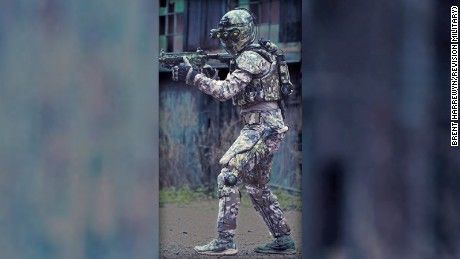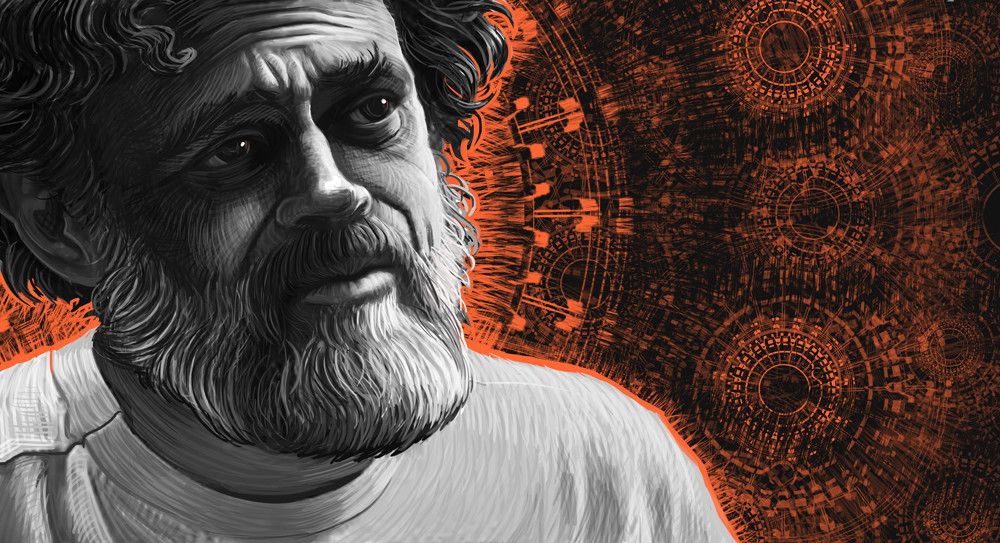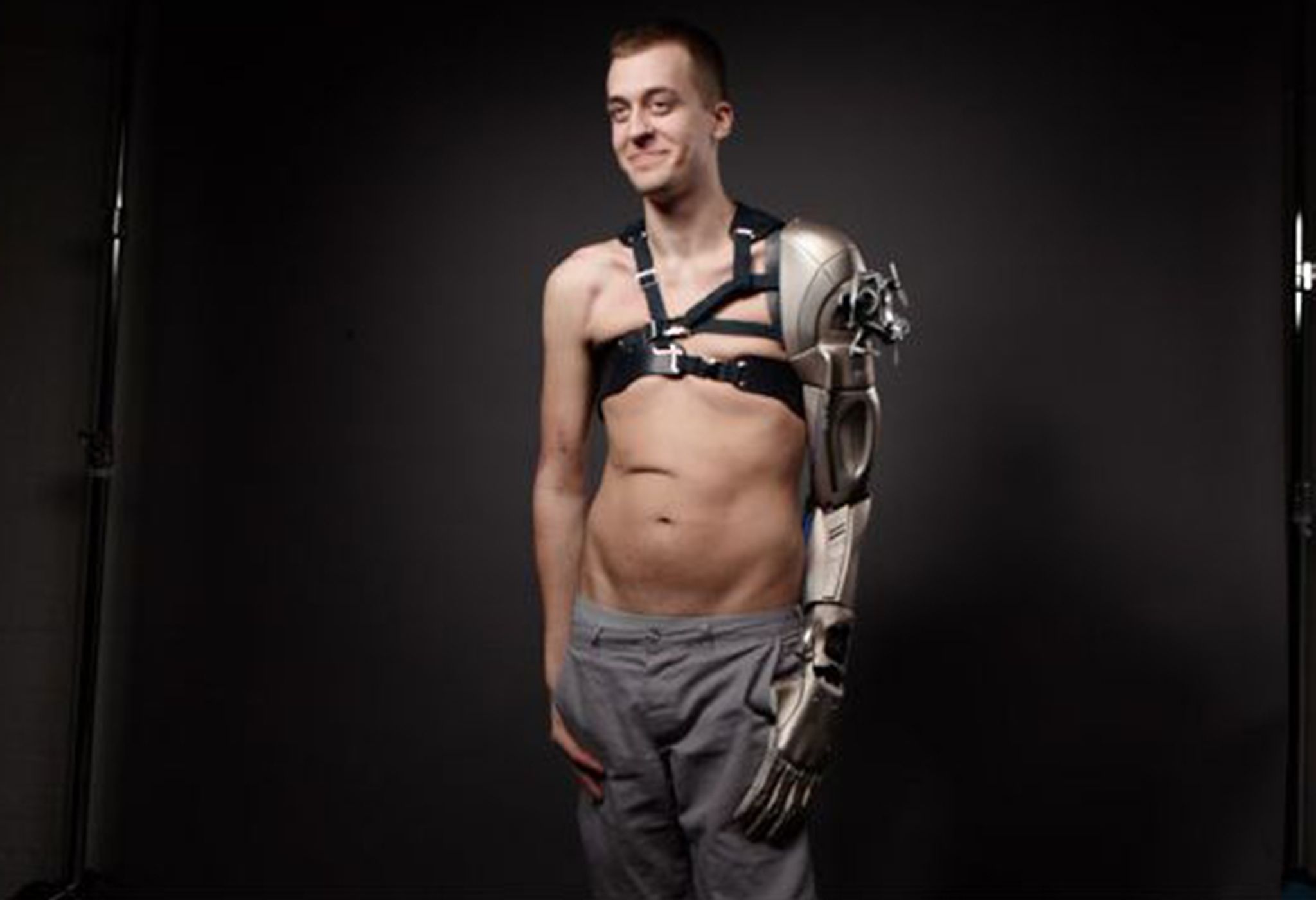Category: cyborgs – Page 129
Bionic fingertip lets amputee feel textures
Cool beans.
Using a bionic fingertip, an amputee for the first time has been able to feel rough and smooth textures in real-time, as though the fingertip were naturally connected to his hand.
After Luke Skywalker got his hand cut off during a duel with Darth Vader in “Star Wars,” the young Jedi received an artificial hand that helped him both grip and feel again. Scientists worldwide are seeking to make this vision from science fiction a reality with prosthetic limbs that are wired directly into the nervous systems of their recipients.
Researchers experimented with amputee Dennis Aabo Sørensen from Denmark, who damaged his left hand more than a decade ago while playing with fireworks. Doctors immediately amputated the appendage after Sørensen was brought to a hospital. [Bionic Humans: Top 10 Technologies].

Never Say Die – SELF/LESS from Science-Fiction to –Fact
In SELF/LESS, a dying old man (Academy Award winner Ben Kingsley) transfers his consciousness to the body of a healthy young man (Ryan Reynolds). If you’re into immortality, that’s pretty good product packaging, no?
But this thought-provoking psychological thriller also raises fundamental and felicitous ethical questions about extending life beyond its natural boundaries. Postulating the moral and ethical issues that surround mortality have long been defining characteristics of many notable stories within the sci-fi genre. In fact, the Mary Shelley’s age-old novel, Frankenstein, while having little to no direct plot overlaps [with SELF/LESS], it is considered by many to be among the first examples of the science fiction genre.
Screenwriters and brothers David and Alex Pastor show the timelessness of society’s fascination with immortality. However, their exploration reflects a rapidly growing deviation from the tale’s derivation as it lies within traditional science fiction. This shift can be defined, on the most basic level as the genre losing it’s implied fictitious base. Sure, while we have yet to clone dinosaurs, many core elements of beloved past sic-fi films are growing well within our reach, if not in our present and every-day lives. From Luke Skywalker’s prosthetic hand in Star Wars Episode V: The Empire Strikes Back (1980) to the Matrix Sentinal’s (1999) of our past science fiction films help define our current reality to Will Smith’s bionic arm in I, Robot.

Military Cyborgs May Soon Be a Reality
BMI’s (according to DARPA and David Axe) could begin as early as 2017 on humans. The plan is to use stentrodes. Testing has already proven success on sheep. I personally have concerns in both a health (as the article highlighted prone to blood clots) as well as anything connecting via Wi-Fi or the net with hackers trying to challenge themselves to prove anything is hackable; that before this goes live on a person we make sure that we have a more secure hack-resistant net before someone is injured or in case could injure someone else.
Soldiers could control drones with a thought.
Doctors implant 3D-printed vertebrae in ‘world’s first’ surgery
Just Amazing
Ralph Mobbs, a neurosurgeon at the Prince of Wales Hospital in Sydney, made medical history in late 2015 when he successfully replaced two vertebrae with custom made prosthesis. The patient, in his 60s, suffered from Chordoma, a particularly nasty form of cancer that had formed on his top two vertebrae and threatened to cinch off his spinal cord as it grew. That would have left him a quadriplegic. Complicating matters, those top two vertebrae are what allow you to turn and tilt your head, so it’s not like doctors can easily fashion a replacement out of bone grafted from another part of the patient’s body. They have to fit perfectly and that’s where the 3D printers come in.
Mobbs worked with Anatomics, an Australian medical device manufacturer, to craft perfect replicas of the patient’s top two vertebrae out of titanium. This is the first time that these two particular neck bones have been printed and installed. “To be able to get the printed implant that you know will fit perfectly because you’ve already done the operation on a model … It was just a pure delight,” Mobbs told Mashable Australia. “It was as if someone had switched on a light and said ‘crikey, if this isn’t the future, well then I don’t know what is’.”
The surgery itself was no small feat. The 15-hour procedure is fraught with peril as the medical team operates within inches of the top of the spinal cord as well as the brainstem and numerous major arteries. “The surgery that we’re doing today is a particularly complicated and long and difficult surgery. It involves exposure at the top of the neck where the neck and the head meets,” Mobbs told ABC 7.30. “It’s essentially disattaching the patient’s head from his neck and taking the tumour out and reattaching his head back onto his neck.” Thankfully, the surgery was a success. Mobbs was able to remove the tumor and implant the prosthetic.


Terence Mckenna’s ‘cyberdelic’ predictions for Virtual Reality 25 years on
Cannot wait to hear Mckenna’s perspective on BMIs for brain connection to all things digital, and microbots used to extend life as well as bionic body parts.
Famed psychonaut Terence Mckenna envisioned a very radical approach of bridging psychedelics with virtual reality to create a supercharged version of consciousness in which language, or rather the meaning behind what we speak, could be made visual in front of our very eyes.
In Mckenna’s “cyberdelic” future of virtual reality, artists and the revival of art, would be at the forefront of innovation, according to a talk he gave to a German audience in 1991.
Does this not still ring true 25 years on? Are not computer programmers and virtual cartographers the modern artists who are pushing the boundaries of our understanding of reality and ourselves?

Prosthetics: Amputee James Young unveils hi-tech synthetic arm inspired by Metal Gear Solid
The job advertisement was highly specific: applicants had to be passionate about computer games and live in the UK. Oh, and they also had to be amputees who were interested in wearing a futuristic prosthetic limb.
James Young knew straight away he had a better shot than most. After losing an arm and a leg in a rail accident in 2012, the 25-year-old Londoner had taught himself to use a video-game controller with one hand and his teeth. “How many amputee gamers can there be?” he asked himself.
In the end, more than 60 people replied to the ad, which was looking for a games-mad amputee to become the recipient of a bespoke high-tech prosthetic arm inspired by Metal Gear Solid, one of the world’s best-selling computer games. Designed and built by a team of 10 experts led by London-based prosthetic sculptor Sophie de Oliveira Barata, the £60,000 carbon-fibre limb is part art project, part engineering marvel.